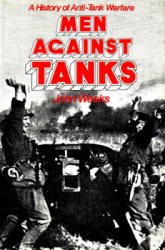The weakening of constitutional politics in the Catholic and/or antirepeal camp enabled the violent revolutionaries to flourish. The Fenian movement, as it would be popularly called, was started by lower ranking participants in the Young Ireland uprising of 1848 who had escaped apprehension. James Stephens and John O'Mahony had gone to Paris, where, amidst various continental political exiles and revolutionaries, they began to formulate their concept of how to promote an independent Irish republic. Stephens worked in Britain and Ireland while O'Mahony went to the United States, promoting an Irish Republican Brotherhood (IRB), a secret organization, made up of cells whose members were unknown to members of other cells, aside from leaders, who would be part of other cells in a pyramidal structure. Their tactic was armed insurrection and their exclusive goal was the establishment of an independent Irish republic. Other issues, such as land reform or concessions to the church, were regarded as distractions from that main goal.
Significantly, Stephens was able to recruit mainly among urban shop workers and artisans, while the farmers and the bourgeoisie, the usual followers of the earlier constitutional movements were indifferent. O'Mahony found a ready audience among the Irish-Americans, where an elaborate support organization was formed. Calling itself Clan na Gael, it would raised immense sums of money for decades after, and has had, in greatly diminished form, organizational continuity to this day. Inevitably divisions developed in America, as one wing advocated, especially after the American Civil War in which so many Irish-born had obtained military experience, attacking the British in Canada. When Stephens went to America to try to resolve the differences, he was overthrown as leader and replaced by an Irish-American, Colonel Thomas Kelly. An unsuccessful attack was made into Canada across the Niagara River on the New York-Ontario border. Afterward, the Irish-American "Fenians" readied themselves for action in Ireland. That uprising, which took place in 1867, was a failure, as a mixture of indiscretions by some members in losing important documents and significant infiltration by police agents doomed it from the beginning. A shipload of volunteers from America sailed straight into the arms of arresting authorities. A rising in Tallaght, outside of Dublin, was easily put down, as was another in southern Kerry. In addition, the movement was subject to severe hierarchical condemnation, as it was feared it would provoke a backlash in England that would inhibit any future concessions to the Catholics.
Oddly enough, the Fenians found their greatest success in their failures, or better, in their martyrs. Efforts by three members to rescue the imprisoned Colonel Kelly from a police van in Manchester resulted in the death of a police officer. The three in turn were executed, provoking massive outrage in Ireland and stimulating the writing of the evocative tune, "The Manchester Martyrs." As is frequently the case, severe state reprisal backfired. One person who was prompted to do something that would mitigate the prospects of violence in Ireland was William Gladstone. Originally a die-hard Tory who had entered politics opposing Catholic emancipation, Gladstone had followed Peel out of the Tory-Conservative Party, and by the late 1860s he had become leader of that alliance of Whigs, Peelites, and Radicals that had become the Liberal Party. His party came to power following the second great electoral reform act, that of 1867, which brought Britain and Ireland one step closer to democracy. To offset the appeal of Fenianism, he advanced a number of reforms for Ireland.
The first was the disestablishment of the Church of Ireland, which the 1869 legislation mandated to take place in 1871. Disestablishment meant that the church's law and its courts would no longer have coercive force. Its property, aside from the churches themselves, would go to a public body that would distribute the same as an endowment for the support of the present clergy and church employees, as well as Presbyterian recipients of the regium donum dating from Stuart times, and grant a final lump sum gift to Maynooth College in place of the annual grant. The remainder of the property was to be used for the people of Ireland, especially for socially ameliorative purposes.
The second was the Land Act of 1870, which called for compensation to any evicted tenant for any improvements on the land, with the presumption that the work was done by the tenant unless the landlord could prove otherwise, and compensation for disturbance based on the value of the holding. It also called for public assistance in buying out a holding from a landlord, but at what were, for most prospective purchasers, relatively high borrowing terms of one-third down payment and interest of 5 percent for 35 years. The Land Act did little to settle the grievances of the Irish farmer-tenants, but it is significant in that it marked the beginning of recognition of a proprietary right of the tenant to the land he worked.
Both gestures, the disestablishment and the land act, can be seen as steps in the direction sought by the Irish Tenant League and the Catholic Defence Association, but they had come about in reaction to Fenian outrages.




 World History
World History









